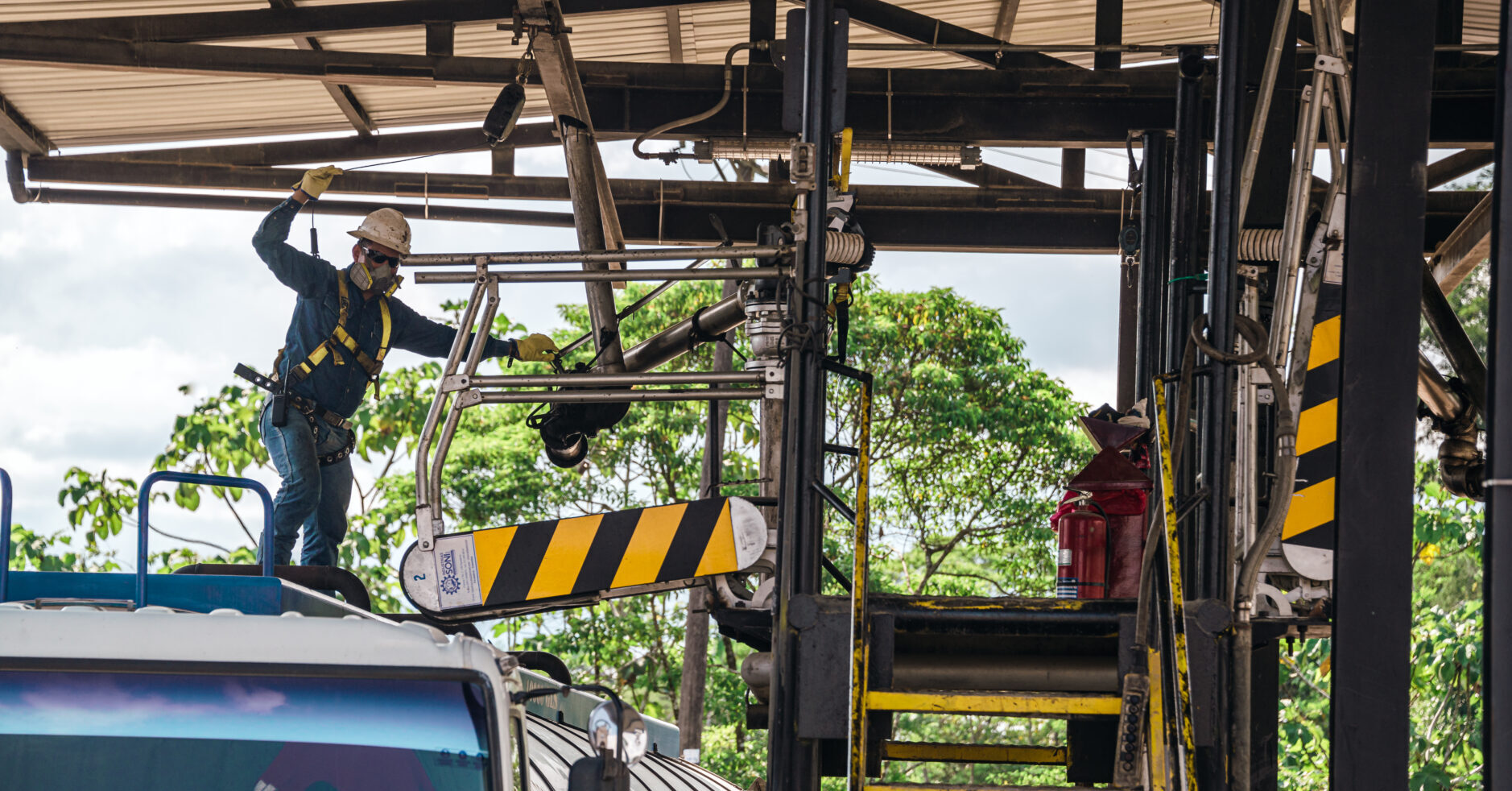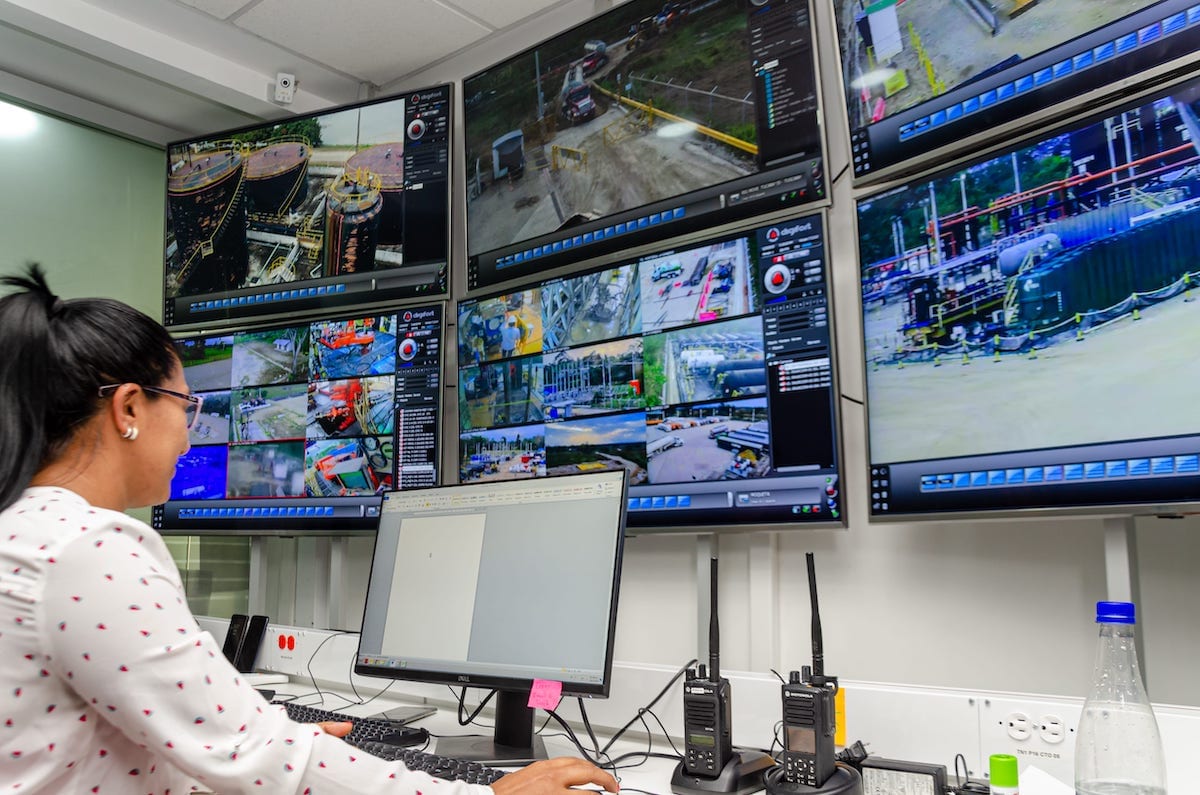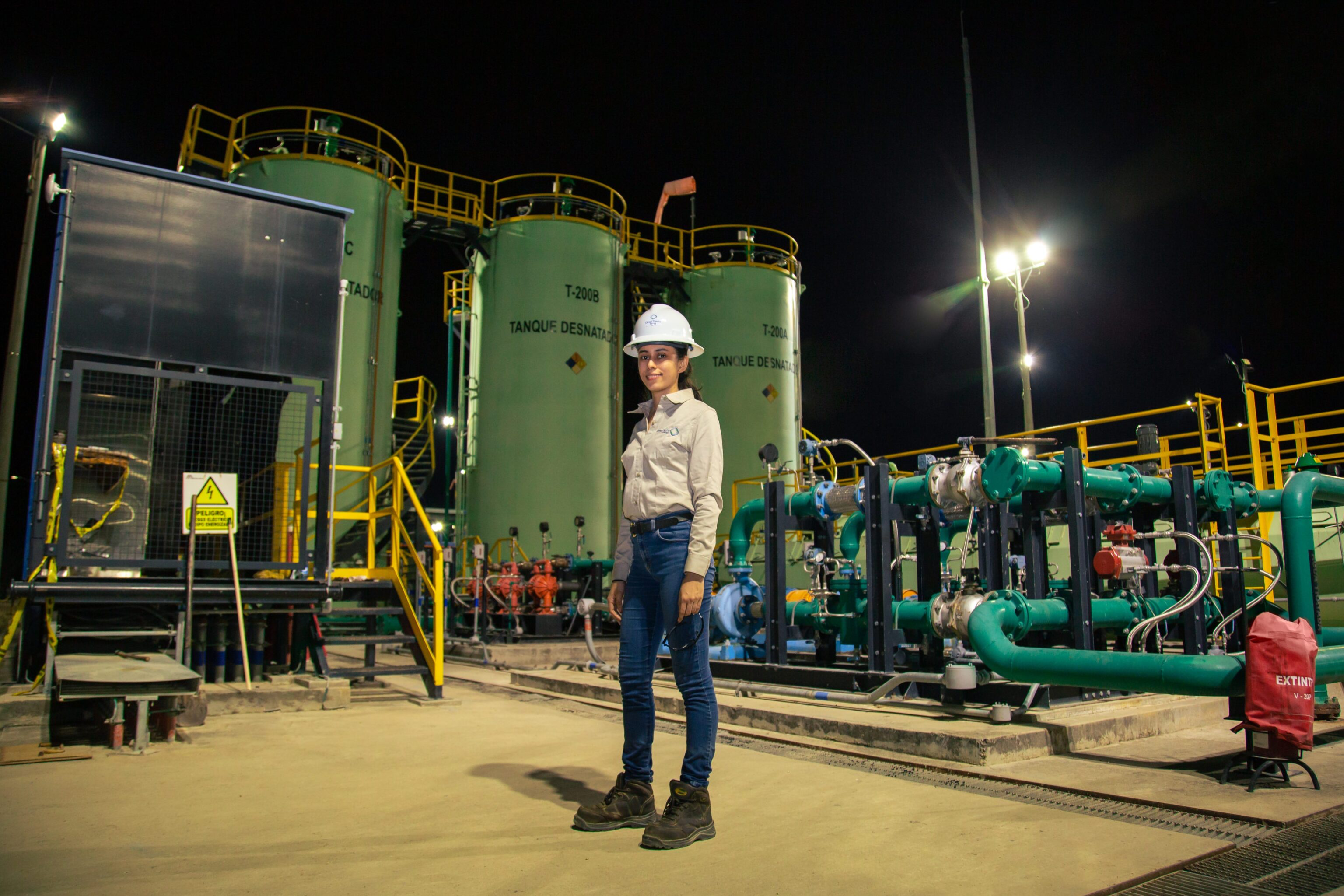Health and Safety are integral parts of Gran Tierra’s culture, and the cutting-edge programs, tools and technology developed and implemented over the past few years continue to drive steady improvement in performance in these areas across the workforce.
The Company’s Lost Time Incident Frequency (LTIF) of 0.00 per 200,000 work hours outperformed all relevant benchmarks and ranked in the top quartile in any region globally for exploration and production companies, as reported by the International Association of Oil and Gas Producers (IOGP). In 2023, the Company recorded more than 16 million worker hours without a Lost Time Incident (LTI), highlighting the team’s success at growing a culture prioritizing safety amongst its workforce and contractors. Gran Tierra continues to drive safety performance through long-term planning and continuity of quality programs with a focus on human factors and the maturation of safety culture.
Gran Tierra Energy has marked each December as Safety Month for the past five years. This is because historically, December is a month that sees elevated rates of safety incidents. Safety Month has helped increase overall awareness by putting safety front and centre during this time. Each day for the last six weeks of the year, a special activity or workshop is held in Colombia and Ecuador to re-focus awareness and reinforce adherence to safety procedures to keep our people safe.
Read the following stories to learn more about the Health and Safety programs we implement to keep everyone involved in or near our operations safe, including employees, contractors and the public.
Our Commitment to Safety
GTE is committed to seeking continuous improvement in workplace and contractor safety. The Company establishes clear expectations for how workers manage safety risks, and helps its contractors improve their safety programs through daily supervision and safety meetings to focus on practices and performance.
0
lost time incidents
0 lost time incidents in 2023
0
hours of safety training
28,805 hours of safety training were given to employees in Colombia and Ecuador
0
days without an incident
In Ecuador, the Company recorded 1,684 days without an incident for part of 2022 and all of 2023
SWIPE FOR MORE

Safety Programs

A Framework for Safe Operations

The Golden Rules: A Safety-Based Video Game

The GPS Room: An Additional Set of Eyes on Safety

Monthly Safety Contractor Meetings

Emergency Response Training

HSE’s Safe Driving Program
SWIPE FOR MORE

Safety Programs
Gran Tierra has a simple objective with regard to safety: ensure that no one gets hurt as a consequence of our operations.
Actions that Gran Tierra undertakes to eliminate or reduce safety risks include:
- Implementing proven safety management systems, procedures and tools with a goal of driving accident and incident rates to zero.
- Working closely with contractors on our sites and insist that they also implement effective safety management processes.
- Setting annual goals for safety performance. Oversight and accountability of our performance set by senior management and the Board of Directors.
GTE’s safety programs and practices include:
- Implementing emergency management software for newly acquired facilities.
- Psychosocial risk preventive activities such as reducing workplace stress and maintaining a supportive workplace environment.
- Using a risk-based approach to direct resources to address risks where they are the greatest. The approach includes dozens of targeted audits and inspections, “Job Safety Analysis Meeting Reviews” with contractors and safety walk-arounds to different work sites.

A Framework for Safe Operations
“Mision Vida“, GTE’s proprietary system for safe operations, is a guide to safe work practices. Its foundation is based on a framework for changing attitudes about safety by recognizing the impact that one’s current mental and emotional condition can have on their perception and decision-making. This understanding then leads to increased safety-consciousness on the job. Through Mision Vida, GTE developed a job specific HSE training plan, based on analyses of company and industry risks.
It includes:
- Basic training for all employees, regardless of their position.
- Additional training modules for workers involved in high-risk tasks.
- Job-specific training modules that reflect the particular role being fulfilled.
- Emergency response training for personnel designated as emergency responders.
A number of learning tools were developed for Mision Vida. One of these tools, the Hand Injury Prevention, or HIP, involves a series of videos, captured by GTE workers themselves, which allows the workers to get a first-person view of the various tasks and to understand safe and unsafe techniques. The video with real data is shared through an application that presents the correct procedures to trainees. The application documents a score of each trainee that is shared with the HSE team. The results determined from the HIP program suggest that using real data allows for better training, which in turn establishes more knowledge and awareness about hand safety in the workplace. The Hand Injury Prevention Program (HIP) has has helped reduced hand injuries by 80%, achieving one year of operations without any hand injuries.

The Golden Rules: A Safety-Based Video Game
While the topic of safety is unquestionably a serious one, Gran Tierra’s safety team recognizes that effective learning can happen in engaging, and sometimes fun, environments. In the past, these topics would have been addressed with presentations and meetings, but recently the Company has created learning-focused video games as an additional method to teach workers proper safety procedures for doing six high risk tasks. In this case, players work in different locations on different high-risk tasks, asking questions, answering challenges and applying correct procedures.
Utilizing a video game in this way follows the scientific method of experimenting with ways to learn from mistakes. The players are evaluated and must pass to qualify to work on certain real-world tasks. The game, the first of its kind, is currently being adapted into an internet-based game to be more broadly accessible by GTE’s workers in the field.

The GPS Room: An Additional Set of Eyes on Safety
In GTE’s Bogotá office, engineers are constantly on the lookout for potential hazards and opportunities to improve safe work management practices, watching live feeds across GTE’s field operations from 50 different cameras streaming 24 hours a day, seven days a week in the “Getting Performance Standard” (GPS) room.
The GPS room has been at the heart of the Company’s strong safety performance each year, driving forward the culture of safety. Since the GPS room was introduced the number of interventions, including those originating in the field, has increased. The GPS room and the growth of the culture of intervention has also resulted in better standardization of work practices across all of GTE’s operations in Colombia.

Monthly Safety Contractor Meetings
GTE is committed to seeking continuous improvement in workplace and contractor safety. The Company establishes clear expectations for how workers manage safety risks, and helps its contractors improve their safety programs through daily supervision and safety meetings to focus on practices and performance. GTE’s Monthly Safety Meetings are an important tool for educating contractors about GTE’s safety policies and procedures.
These regular meetings are attended by senior-level operations and HSE staff of each contractor. During these meetings, the previous month’s performance and safety efforts are discussed, which provides GTE with a holistic understanding of our project’s status and the safety culture of our business. These meetings also promote a culture of continuing learning and improvement.

Emergency Response Training
In adherence to GTE’s Emergency Response plan, the Company carries out periodic emergency response training exercises. In 2023, the Company conducted 487 tabletop and in-person emergency simulations which assessed the Company’s preparedness to deal with various emergency scenarios.

HSE’s Safe Driving Program
GTE works hard to eliminate unsafe conditions and practices at all of its facilities to protect workers and maintain the integrity of its operations. Once produced, the Company’s crude is sold on site or transported to a different location for sale, often by road on trucks. This means that thousands of truck trips, often hundreds of kilometres long on a variety of roads, are necessary. All drivers transporting GTE’s crude work for independent trucking contractors. Driving simulators have been added to the Safe Driving Program and is required for all drivers. The HSE driving plan is a multifaceted process which includes upgrading roads, making them safe for everyone to drive on.
Driving on Colombia’s roads brings a number of factors into the safety equation, including vehicle maintenance, road conditions, weather, pedestrians, animals, motorcycles and other vehicle drivers. To manage these risks, GTE’s Health, Safety and Environment Department (HSE) has developed a comprehensive driving plan that, added to their existing training, better prepares drivers for all of these factors.
GTE’s driving plan contains a number of focus areas, including:
- Driver and instructor training
- Detailed planning before each trip
- Use of an in-vehicle monitoring system to improve driving behaviour
- Random in-route audits to identify improvement and non-compliance
- Road hazard assessments
- Self-assessments for drivers

